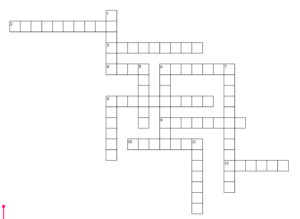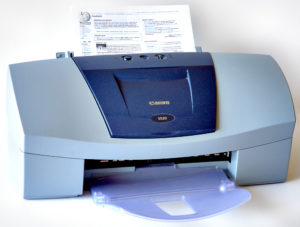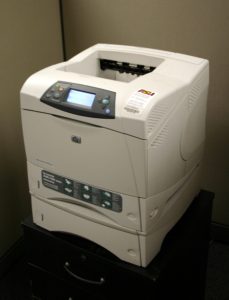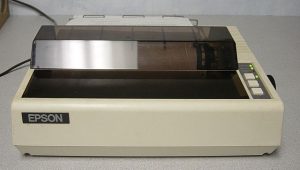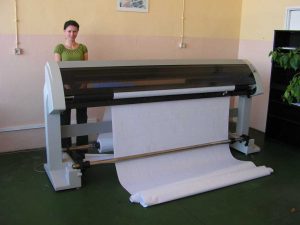Starter
Inkjet Printer
Inkjet Printer
Inkjet printers use a highly accurate nozzle to spray a narrow jet of ink on to a piece of paper.
Main uses
- Home printing
- Photo printing
Advantages
- Cheap to buy
- Affordable ink
Disadvantages
- Expensive for high volume printing
- Ink not waterproof
- Slow printing speed.
Laser Printer
Laser Printer
Laser printers uses a combination of static electricity, magnetically sensitive toner and a heated roller to fuse plastic coated toner on to a piece of paper.
Main Uses
- Office environments
Advantages
- Cheap for high volume applications
- Toner is waterproof.
- Very quiet
Disadvantages
- Machines are expensive to buy
- Toner refills are expensive to buy
- Very sensitive to dirt
Dot Matrix Printer
Dot Matrix Printer
These machines physically strike a piece of paper with a print head ( in the shape of a dot), transferring ink to the paper and causing an imprint on a carbon copy sheet below.
Main Uses
- Factories and dirty environments
Advantages
- Can be used in dirty environments
- Only printer that can carbon copy
Disadvantages
- Very low print quality
- Very noisy!
Graph Plotter
Graph Plotter
This is a very large format printer, that prints highly accurately to scale.
Not to be confused with a graphics tablet!
Main Uses
- Architectural Drawings
- Schematics
Advantages
- Can print very large printouts accurately
Disadvantages
- VERY expensive (Thousands of pounds) to buy
- Paper very expensive!
3D Printer
3D Printer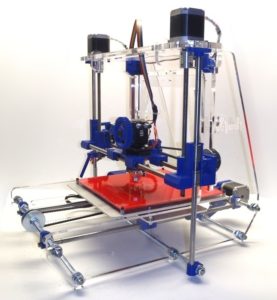
This printer uses a nozzle that ejects a fine thread of melted plastic on to a surface. The printer then repeats the process over hundreds of layers, building up a 3D object in the process.
Main Uses
- Prototyping
- Small scale production
Advantages
- Cheap to produce working prototypes
- No need to  ship globally as can be printed on demand and on location.
Disadvantages
- More expensive that injection moulding for large production runs
- Not a accurate as other techniques
